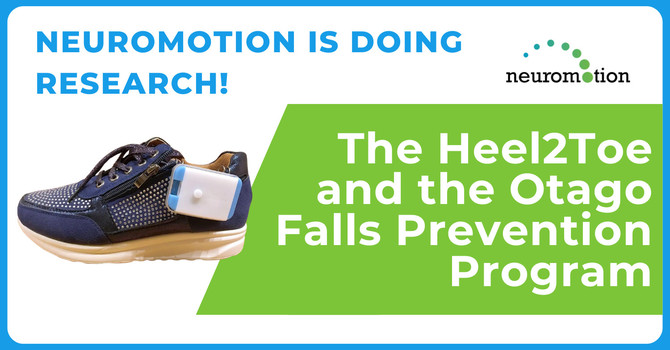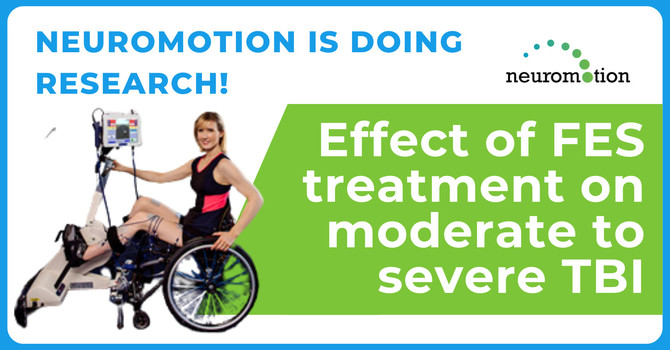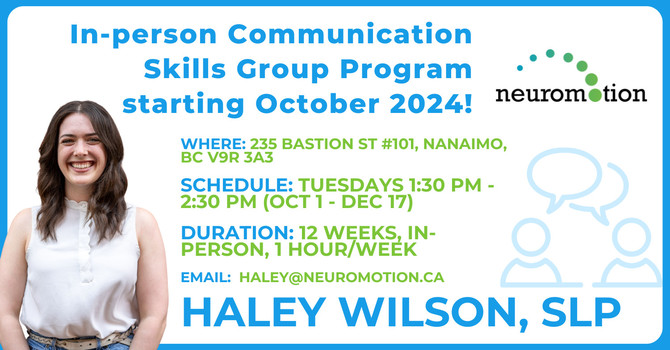
Background
Transverse myelitis (TM) is the “focal inflammation” of the spinal cord. (Ocek, et al., 2023, p. 268) The spinal cord functions as the highway for sensory and motor signals. In the case of inflammation (as seen in TM) the highway gets disrupted. The result of these disruptions depends on the level where the cord is being affected, but can present as muscle weakness and paralysis, diminished sensory inputs, spasticity, fatigue and depression. (Jamison, et al., 2020, p. 1) Transverse myelitis affects 1400 people/year in the United States and has various causes, such as infectious myelitis, autoimmune conditions and demyelinating diseases, which often confuses diagnoses. Further, determining the cause of TM is critical for determining the method of treatment. (Feller, 2019, p. 3) Most cases of TM present with identifiable causes (71.1%) whilst the rest of the cases (28.9%) are defined as spontaneous or without an identifiable cause. (Ocek, et al., 2023, p. 271)
Often TM is described as the infiltration of immune cells into the spinal cord, resulting in a rapid onset of motor, sensory and autonomic dysfunction. (Absoud, et al., 2017, p. vii) The complications of TM are numerous and thus have a large impact on quality of life. Such complications include the following; orthostatic hypotension (causes blurry vision, fainting, dizziness, light-headedness, nausea), lung and urinary tract infections, fractures, kidney stones; and may often require medical or surgical interventions. (Lim, n.d., p. 958) TM can also be a precursor or part of the symptomology of other central nervous system diseases, such as neuromyelitis optica (NMO) (Absoud, et al., 2017, p. vii), anti-myelin oligodendrocyte glycoprotein (MOG)-associated diseases (MOGAD), or multiple sclerosis (MS). (Ocek, et al., 2023, p. 269) Around 40-60% of patients with TM later develop MS in the long-term. (Ocek, et al., 2023, p. 272)
The timing and accuracy of a TM diagnosis is important, but receiving multidisciplinary care, including physical rehabilitation, is crucial for a good prognosis. (Feller, 2019, p. 2) Approximately one out of every three people diagnosed with TM do not recover walking ability. (Feller, 2019, p. 3) Full recovery is possible, and improvement of symptoms are often seen within 3-6 months if the condition is treated accordingly. However, this condition is also known to leave individuals with significant limiting disabilities. (Absoud, et al., 2017, p. 1)
Causes
- Infection
- Fungal infections
- Parasitic infections
- Mycoplasma pneumonia (bacteria),
- Herpes simplex virus,
- Varicella zoster virus,
- Epstein–Barr virus,
- Human immunodeficiency virus,
- Enteroviruses,
- Cytomegalovirus (Ocek, et al., 2023, p. 271)
- COVID-19 à the virus invades the CNS via the olfactory tract (enabling smell) or via blood circulation, triggering an inflammatory response in the CNS. (Chow, et al., 2020, p. 3)
- Autoimmune disorders (Feller, 2019, p. 3)
- Lupus erythematosus
- Sjogren’s Syndrome
- Antiphospholipid syndrome
- Neurosarcoidosis
- Tick-borne infections (Feller, 2019, p. 11)
- Drugs or toxins
- Drugs to treat NMO-related TM can exacerbate MS progression (Feller, 2019, p. 9)
- Spinal cord infarction (caused by the loss of blood flow to the spine) (Feller, 2019, p. 3)
- Tumours
- Compressive neoplasm (Feller, 2019, p. 3)
- Vaccines
- The Vaccine Adverse Event Reporting System (VAERS) recorder 119 post-vaccination related TM cases within a period of 32 years. Thus, it is extremely rare. (Hsiao, et al., 2021, p. 4)
- Vaccine-related TM was recorded as an adverse event in 1.739/per million people after getting the COVID-19 vaccine. (Hsiao, et al., 2021, p. 1)
- Vaccines could cause TM through a mechanism of “Molecular Mimicry”, where microorganism epitope’s structure (the part recognised by the immune system) is similar to that of the host’s antigen (the immune system’s detectors) which induce an immune response that could target the spinal cord. (Hsiao, et al., 2021, p. 4)
Diagnosis
A diagnosis can be made if laboratory or imaging studies show signs of central nervous system (CNS) inflammation. (Ocek, et al., 2023, p. 269)
- Cerebrospinal fluid (CBF)
- To determine the cause of TM,
- Oligoclonal band (protein) presence in CBF indicate inflammation of the CNS (Ocek, et al., 2023, p. 271)
- Radiological imaging
- MRI of the brain, brainstem and spinal cord is used to rule out/identify compressive causes and/or inflammation, (Feller, 2019, p. 3)
- Spinal cord lesions of more than 2 segments long in the cervical and/or thoracic region are indicative of TM. (Ocek, et al., 2023, p. 272)
- Presence of antibodies
- Immunoglobulin M indicates post-infectious TM,
- Immunoglobulin G, that increases by four times, indicates post-infectious TM and/or NMO,
- Anti-aquaporin-4-spesific antibodies are an indication of NMO (Lim, n.d., p. 954)
Symptoms
- Spasticity,
- Joint contractures, (tightening of joints)
- Heterotopic ossification (abnormal bone growth),
- Gastro-intestinal complications such as: distension, regurgitation, indigestion, and constipation,
- Urinary tract infection,
- Autonomic dysreflexia/hyperreflexia (overreaction of the autonomic nervous system to stimuli causing symptoms like excessive sweating and heartrate changes),
- Pain,
- Shoulder pain (Lim, n.d., p. 958)
- Weakness,
- Numbness,
- Muscle spasms,
- Difficulty breathing (Ocek, et al., 2023, p. 269)
- Decreased bladder control (Ocek, et al., 2023, p. 272)
- Sensation of a constricting band at the level of sensation (Feller, 2019, p. 3)
- Impaired mobility (Feller, 2019, p. 4)
- Impaired proprioception (the body’s ability to identify movement and its position in space) (Feller, 2019, p. 6)
- Spinal shock (Feller, 2019, p. 9)
- Impaired balance (Jamison, et al., 2020, p. 2)
- Hypertonicity (rigidity),
- Fixed plantar flexion (pointed foot) (Onyekere & Igwesi-Chidobe, 2022, p. 2)
- Fever and tachycardia (high heartrate) in case of infection (Lim, n.d., p. 253)
- Mixed types of gait disorders - ataxic, spastic, and paretic (Al-Zamil, et al., 2024, p. 3)
Pharmacotherapy
Pharmacological treatment is used to treat and improve tissue oedema, inflammation, and other symptoms. Further treatment is required to recover motor and sensory deficits. (Wu, et al., 2024, p. 597)
- Methylprednisolone → is used to start treatment. (Ocek, et al., 2023, p. 272) It treats demyelination by enhancing remyelination and inhibiting inflammation. (Absoud, et al., 2017, p. 2)
- Corticosteroids → to reduce inflammation and speed up recovery (Absoud, et al., 2017, p. 1)
- Plasma exchange → has shown to rapidly improve symptoms and functionality. (Ocek, et al., 2023, p. 272)
- Intravenous immunoglobulin → to manage inflammation. (Feller, 2019, p. 2)
- Acyclovir → as an antiviral agent. (Feller, 2019, p. 2)
- Doxycycline → a broad-spectrum antibiotic to treat bacterial infections (Feller, 2019, p. 2)
- Cyclophosphamide → to suppress the immune system in case of an autoimmune trigger of TM (Feller, 2019, p. 4)
- Baclofen, Valium, diazepam, tizanidine and gabapentin → for spasticity management (Feller, 2019, p. 9)
- Enoxaparin → to prevent and treat deep vein thrombosis (Feller, 2019, p. 9)
- Intramuscular injections of and diclofenac → to treat inflammation (Onyekere & Igwesi-Chidobe, 2022, p. 2)
- Gabapentin, pregabalin, and carbamazepine → to treat neuropathic pain. (Lim, n.d., pp. 956-957)
Physical Therapy
Physical therapy and occupational therapy constitute an important part of rehabilitation in the case of TM in order to regain functional movements and independence. (Feller, 2019, p. 4) The following methods have been used to treat TM:
- Task specific training → transfers, bed mobility, wheelchair skills, perturbation-based training. (Feller, 2019, p. 7)
- Seated balance training → short and long periods of sitting, activities at different angles occupation applicable movements (Feller, 2019, p. 8)
- Functional electrical stimulation (FES) → for strengthening and increasing the range of motion in the lower limbs (Feller, 2019, p. 7) FES cycling was found to correlate with decreased inflammation. (Onyekere & Igwesi-Chidobe, 2022, p. 7)
- Stretching and range of motion exercises → to reduce spasticity and to maintain joint integrity (Feller, 2019, p. 7)
- Weightbearing exercises (Feller, 2019, p. 2) → to improve tolerance to upright positions and to maintain bone integrity and cardiovascular health. (Feller, 2019, p. 7)
- Education sessions → to educate people living with TM on the topics of basic spinal cord anatomy, autonomic dysreflexia, pressure relief management, and prognosis.(Feller, 2019, p. 8)
- Repetitive task training,
- Gait mobility training (Jamison, et al., 2020, p. 3)
- Neuromuscular electrical stimulation → to increase voluntary strength and motor control while performing gait activities. (Jamison, et al., 2020, p. 5)
- Core activation activities → to increase balance stability (Jamison, et al., 2020, p. 5)
- Eccentric exercise activities → to strengthen muscles, and to boost the metabolic rate of muscles. (Jamison, et al., 2020, p. 6)
- Cryotherapy → to reduce muscle spasms (Onyekere & Igwesi-Chidobe, 2022, p. 4)
- Electrical acupuncture → showed to increase bladder contol, increase power in muscle contractions, reduced inflammation. (Wu, et al., 2024, p. 600)
- Robotic assisted gait training devices (e.g. Lokomat) → shows promising results in gait retraining. (Lim, n.d., p. 957) Further development of powered exoskeletons are also being researched as assistive device for standing and gait training. (Lim, n.d., p. 958)
- Transcutaneous electrical nerve stimulation (TENS) → showed success in treating pain, has anti-inflammatory and regenerative properties, and reduces motor and sensory deficits. (Al-Zamil, et al., 2024, p. 1)
Thus, following a multimodal treatment approach is crucial for enhancing and regaining functional independence and sensory function in this population. (Feller, 2019, p. 9)
References
Absoud, M. et al., 2017. A Multicentre Randomised Controlled Trail of Intravenous Immunoglobulin Compared with Standard Therapy for the Treatment of Transverse Myelitis in Adults and Children (STRIVE). Heatlh Technology Assessment, 21(31), pp. a-76.
Al-Zamil, M. et al., 2024. Functional Recovery and Regenerative Effects of Direct Transcutaneous Electrical Nerve Stimulation in Treatment of Post-COVID-19 Guillain-Barre and Acute Transverse Myelitis Overlap Syndrome: a Clinical Case. Journal of Functional Morphology and Kinesiology, Volume 40, p. 9.
Chow, C. C., Magnussen, J., Ip, J. & Su, Y., 2020. Acute Transverse Myelitis in COVID-19 Infection. BMJ, Volume 13, pp. 1-4.
Feller, G., 2019. Physical Therapy Management of a Non-Ambulatory Individual After Diagnosis of Infectious Longitudinally Extensive Transverse Myelitis: a Case Report. Iowa Research Online, pp. 1-13.
Fiani, B., Covarrubias, C. & Jarrah, R., 2021. Neuroimmunology and Novel Methods of Treatment for Acute Transverse Myelitis. Cureus, 13(8), pp. 1-7.
Gok, D. K. & Baydemir, R., 2023. Evaluation of the Factors Affecting the Clinical Course and Prognosis in a Group of Patients with Transverse Myelitis. Chronic Precision Medical Research, 4(1), pp. 73-78.
Hsiao, Y.-T., Tsai, M.-J., Chen, Y.-H. & Hsu, C.-F., 2021. Acute Transverse Myelitis After COVID-19 Vaccination. Medicina, 57(1010), pp. 1-7.
Jamison, L., Spoonts, M. & Rosario, M. G., 2020. Effects of Training with Impairment Based Therapeutic Intervention Program for Improvement in Function and Independence in an Individual Diagnosed with Transverse Myelitis. Journal of Rehabilitation Pratices and Research, 1(106), pp. 1-8.
Lim, P. A., n.d. Transverse Myelitis. In: Rehabilitation. s.l.:s.n., pp. 952-959.
Murphy, O. C. et al., 2022. Identification of Specific Causes of Myelopathy in a Large Cohort of Patients Initially Diagnosed with Transverse Myelitis. Journal of the Neurological Sciences, Volume 442, pp. 1-8.
Ocek, L. et al., 2023. Comprehensive Evaluation of Acute Transverse Myelitis Spectrum Disorders: A Retrospective Analysis of 52 Patients. Turkish Jounal of Neurology, Volume 29, pp. 268-273.
Onyekere, C. P. & Igwesi-Chidobe, C. N., 2022. Physiotherapy Management of Acute Transverse Myelitis in a Pediatric Patient in a Nigerian Hospital: a Case Report. Journal of Medical Case Reports, 16(93), pp. 1-9.
West, T. W., 2013. Transverse Myelitis - a Review of the Presentation, Diagnosis, and Initial Management. Discovery Medicine, 16(88), pp. 1-7.
Wu, M., Tang, Q. & Gao, W. Z. L., 2024. Electroacupuncture for Acute Transverse Myelitis Following Viral Infection: A Case Report. Explore, Volume 20, pp. 597-601.



